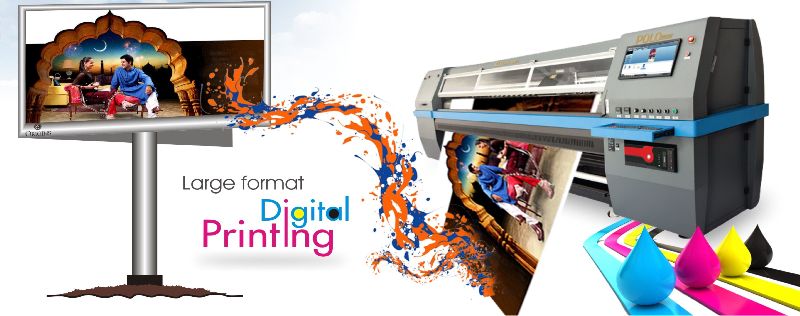The Basic Principles Of Digital Printing
The Basic Principles Of Digital Printing
Blog Article
The 45-Second Trick For Digital Printing
Table of Contents10 Simple Techniques For Digital PrintingEverything about Digital PrintingDigital Printing - QuestionsSome Known Incorrect Statements About Digital Printing The Best Strategy To Use For Digital PrintingDigital Printing Things To Know Before You BuyThe Of Digital PrintingThe Definitive Guide to Digital Printing
Customization also permits organizations to stand out in a jampacked market by creating one-of-a-kind marketing products that separate them from their competitors. One of the major benefits of digital printing is the ability to print variable information. Each published piece can be unique, enabling organizations to develop individualized advertising materials that talk directly to their target market.Digital printing additionally enables for modification in the style of marketing materials (Digital Printing). With electronic printing, companies can develop styles that are unique and tailored to their details requirements.
What Does Digital Printing Do?
By publishing smaller sized amounts of advertising and marketing products, organizations can reduce waste and avoid the need for excess inventory. Digital printing is also versatile.
By utilizing different materials and layouts, businesses can develop unique marketing products that attract attention from their competitors and stand out from their target market. Digital printing additionally supplies uniformity. With typical printing approaches, there is often variant in between prints as a result of differences in ink protection, pressure, and various other factors.
This consistency can aid construct client count on and integrity, showing that the company is dedicated to giving high-grade products. Consistency is particularly vital for services that want to build consumer depend on and reliability. By ensuring that every print corresponds, services can show that they are committed to supplying top quality products and taking notice of the details.
The Greatest Guide To Digital Printing

Additionally, digital printing creates much less waste since it can publish on need and in smaller sized amounts, lowering the need for excess inventory and materials. Digital printing also uses less energy compared to traditional printing methods. Digital printers do not require as much energy to operate, as they do not need to warm up as a lot or make use of as much power to run.
About Digital Printing

Countered printing requires a plate for each color printed. Conventional countered printing is a print method that uses light weight aluminum plates to move ink onto a rubber sheet (often see this page referred to as a "blanket").
Digital Printing Fundamentals Explained
Although the equipment's set-up costs are high initially, added devices come to be reasonably less expensive as the quantity rises. Offset printing permits for a vast array of print products to be used during manufacturing. It enables the printer to utilize different paper kinds, personalized coatings, and various inks. The top quality images generated with offset printing make it the preferred approach, particularly among visuals designers, when looking for the best color recreation, information, and professional-looking prints.
The essential printing approach stays countered. For digital inkjet printing, ink is moved directly onto the surface area. Rather than counting on aluminum plates and rubber blankets to move an image, electronic printing uses fluid ink throughout production. Typical home inkjet printers are one of one of the most common digital printing approaches.
Facts About Digital Printing Revealed
Since balanced out printing can mix customized color inks for each job, it will normally obtain the shades spot-on. Count on balanced out printing for clean, distinct types and photos without touches or areas.
It costs a whole lot to begin a balanced out task. You have to spend cash into creating home plates, which requires time. Nonetheless, when you've spent it, every one of click over here the materials are ready to go, and you'll invest much less on huge offset work than an electronic print, which has to do with the same per item despite how large the task gets.
Digital printing is less expensive for low-volume work. The rate per device drops for digital printing, so at some point, they crisscross. Transforming information within a single print task.
Some Ideas on Digital Printing You Need To Know
While digital printing or inkjet printing is the preferred choice in the present times, there are engaging factors to transform from great site balanced out to digital printing systems. When printing offset or electronically, critical choices and processes are entailed in shade matching.
Industrial inkjet printing offers convenience for printing on lots of different substrates. Digital printing is excellent for clients who do not call for longer runs and warehousing products.

One advantage of digital printing is selecting from a large variety of electronic substratums. With electronic printing, the price of the substratum in the total work is tiny.
How Digital Printing can Save You Time, Stress, and Money.
drop-on-demand is the 2nd printing technology to think about. Constant inkjet systems require significant upkeep, even more operator training, and higher downtime. Devices prices in inkjet printing are far reduced than balanced out printing as there are no plate-making, plates, and press costs. Beyond the capital spending, the prepress equipment and printing presses call for extremely competent operators in countered printing, which adds labor costs.
Report this page